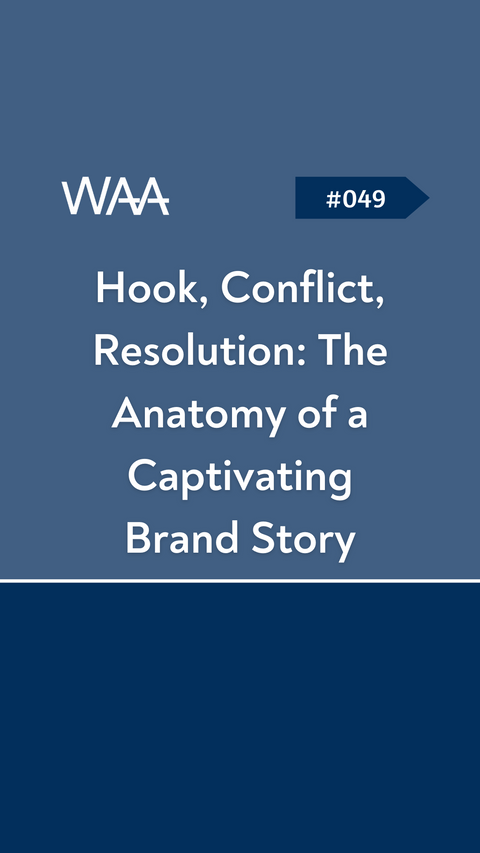
#049 Hook, Conflict, Resolution: The Anatomy of a Captivating Brand Story
Introduction:
In the world of branding and marketing, the power of storytelling is undeniable. A well-crafted brand story has the ability to captivate an audience, emotionally engage them, and leave a lasting impression. To create a compelling brand story, it's essential to understand the anatomy of storytelling. In this blog post, we will delve into the three key elements that form the structure of a captivating brand story: the hook, the conflict, and the resolution. By mastering these elements, you can create brand stories that resonate with your audience, build a strong connection, and leave a lasting impact.
The Hook: Grabbing Attention and Building Interest
The hook is the opening element of your brand story, designed to grab the attention of your audience and entice them to keep reading or listening. It needs to be captivating, engaging, and immediately draw the audience into your story. Some effective hooks in branding include:
-
Intriguing Questions: Pose a thought-provoking question that sparks curiosity and makes the audience eager to know more about your brand or product.
-
Start with a Compelling Anecdote: Share a relatable or emotional anecdote that captures the essence of your brand and hooks your audience from the start.
-
Provocative Statements: Make a bold statement or share a surprising statistic that challenges conventional wisdom or captures attention.
The Conflict: Creating Tension and Emotional Engagement
The conflict is the central element of your brand story that creates tension and emotional engagement. Conflict can take various forms, such as the struggle against a problem, an internal challenge, or an external obstacle. By incorporating conflict into your brand story, you amplify its impact on your audience. Here are a few ways to introduce conflict:
-
Identify Customer Pain Points: Highlight the challenges or problems your target audience faces and position your brand as the solution.
-
Showcase an Internal Journey: Share the personal transformation or inner journey that your brand or its founder went through, highlighting the struggles and obstacles overcome.
-
Uncover Industry Challenges: Highlight the broader issues or industry challenges your brand is tackling, positioning your brand as a force for positive change.
The Resolution: Inspiring Solutions and Brand Connection
The resolution is the climax of your brand story and the moment where you provide a satisfying solution or resolution to the conflict. This is where you highlight the value proposition and unique selling points of your brand. Consider these approaches to resolving the conflict:
-
Showcase Success Stories: Share real-life examples or customer testimonials that demonstrate how your brand or product has successfully addressed the conflict and improved the lives of your customers.
-
Demonstrate Expertise and Innovation: Emphasize how your brand's unique approach or expertise enables it to overcome the conflict and provide innovative solutions.
-
Paint a Vision for the Future: Inspire your audience by painting a compelling vision of what the future holds once they embrace your brand or solution. Tap into their aspirations, hopes, and desires.
Conclusion:
Crafting a captivating brand story requires an understanding of the key elements that drive emotional engagement and connection. By mastering the hook, conflict, and resolution in your storytelling, you can create brand narratives that grab attention, keep audiences engaged, and leave a lasting impression. The hook captivates, the conflict creates tension, and the resolution inspires solutions and builds a connection. With a well-structured brand story, you can differentiate your brand, engage your audience, and foster loyalty, propelling your business to new heights in the competitive world of branding and marketing.
